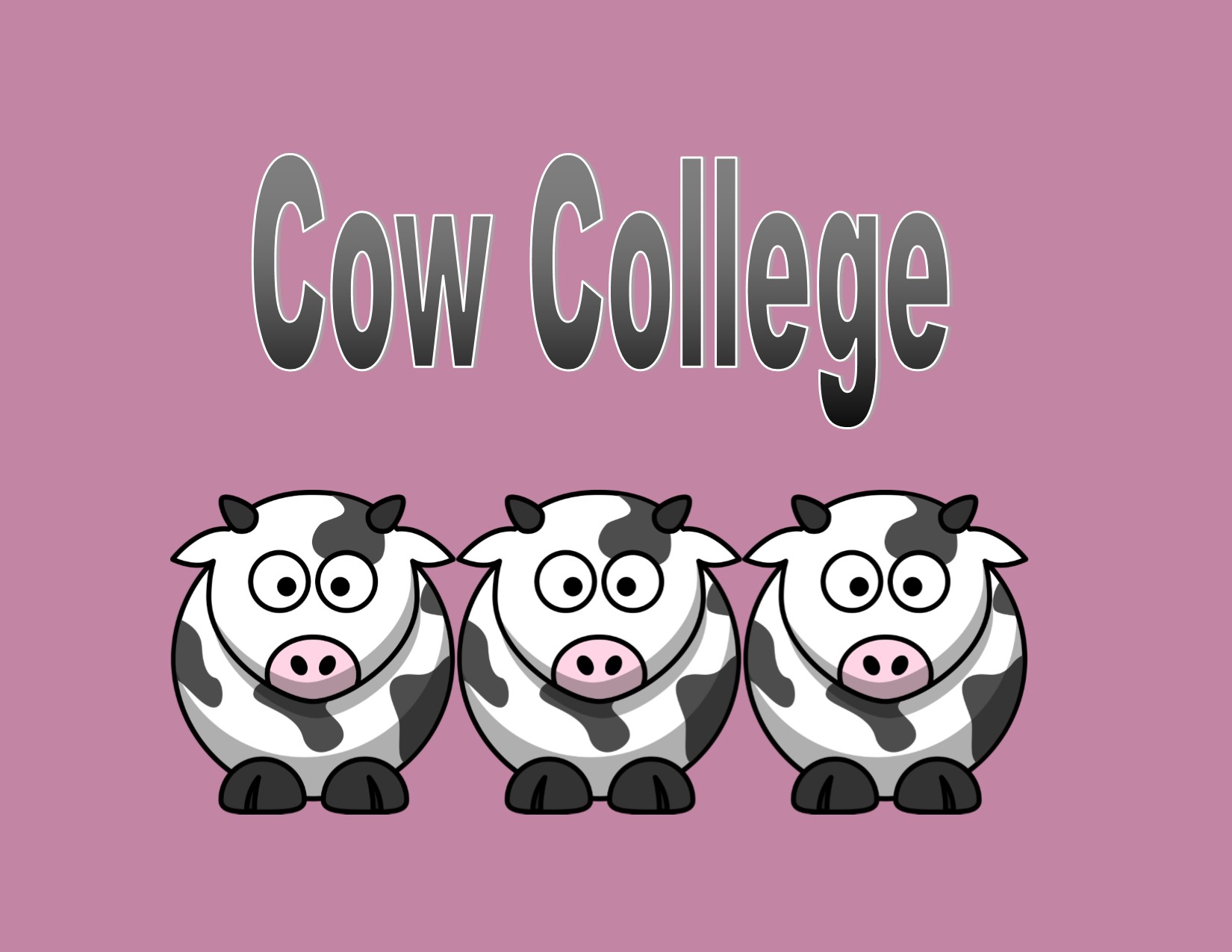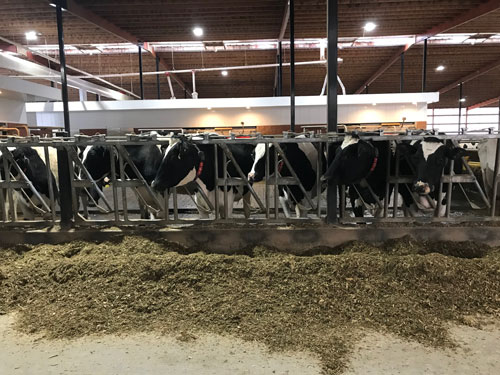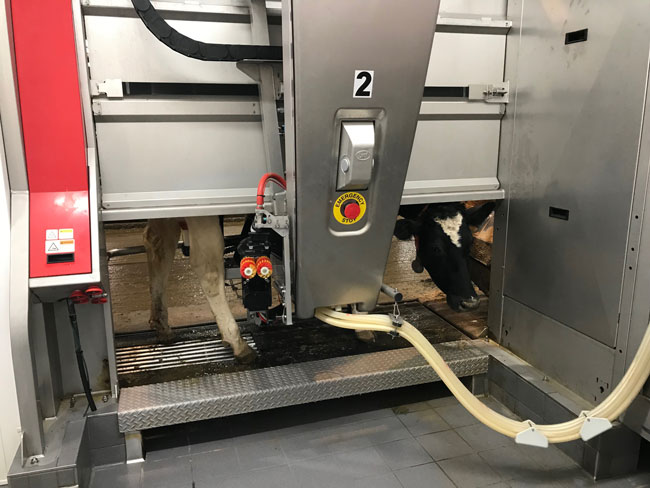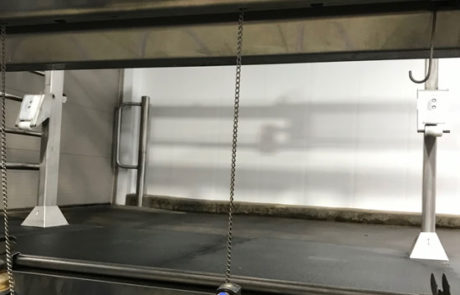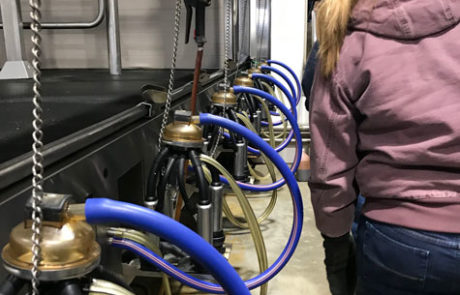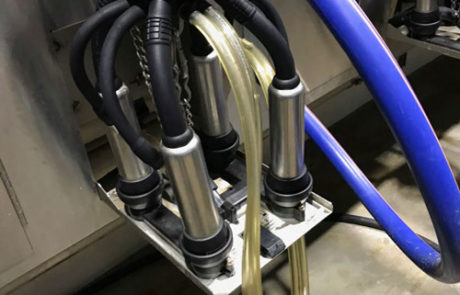The third and final day of Cow College 2019 consisted of a field trip!
We first headed to Henschel’s Dairy Farm in Manawa, WI. They currently milk 350 cows in a 6-row, sand bedded, tunnel ventilated free-flow robotic milking barn with six Lely A4 units. This system was installed in 2017 and has improved their production to 86 lbs of milk per cow and each cow averages 2.6 milkings a day.
The cows are tracked through a collar around their neck. This collar provides a plethora of information to the Henschel’s which has allowed them to mainstream the breeding process. They currently have at least 95% of their cows breeding. The amount of food the cows get is also regulated by the collars. As a cow enters the milking stall, a 18% protein pellet is fed to the cow but the amount they receive is based on their activity.
Regarding manure management, the milking barn has alley scrappers which moves the manure to the end of the barn and then is pumped under the nearby highway to a 5.7-million-gallon manure pit. This underground manure tunnel is uncommon but has allowed the far to decrease potential run-off problems.
The farm also contains 1500 acres of cropland made up of corn for silage and grain, alfalfa haylage, and soybean for grain. Custom liquid manure is applied to the fields, again helping decrease potential run-off problems.
Next, we headed to the Bonikowski Dairy Farm in nearby by Ogdensburg, WI. This third-generation dairy farm currently houses 380 cows in six row drive thru, tunnel ventilated, sand bedded free stall barn. They milk those cows with a double-twelve DeLaval stainless steel parlor. This parlor has increased efficiency and the Bonikowski’s are getting 75lbs of milk per cow with cows getting milked twice a day.
For manure management, the Bonikowski Farm also has something different than most farms. The farm contains a two-part manure pit. This first, smaller (and by smaller we mean 1 million gallon), pit allows sand to settle out and then the liquid flows into a larger 4-million-gallon pit.
The 900 acres of cropland includes corn, alfalfa haylage, and soybeans. The crops are harvesting using custom harvesting and manure haling.
After the second farm, everyone headed over to the Cedar Springs Golf Course for lunch. After filling us up with delicious broasted chicken, we heard a short talk from Dr. Dave Kammel on current and future dairy housing trends.
Dr. Kammel is a professor of agricultural building design with the University of Wisconsin and Extension’s dairy hosing specialist.

